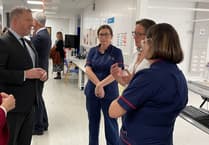The Welsh Government will review whether the time targets set for ambulances to reach the most life threatening calls remain “appropriate”, with the goal being repeatedly missed.
The target response time for a ‘red’ call in Wales is for a response to arrive on scene within eight minutes for 65 per cent of calls.
Latest figures show that the target was reached on just 50.4 per cent of calls in October.
The target has not been hit since the summer of 2020, and health secretary Jeremy Miles has told the Senedd that the “appropriateness” of the target will be reviewed.
Opposition Senedd members said that rather than reviewing targets, actions should be taken to allow ambulances to meet the current aims.
Mr Miles told the Senedd that in August, the Senedd Health and Social Care Committee published a report following a general scrutiny session with the Welsh Ambulance Services University NHS Trust.
“The committee identified the pressures the service is under, but it also recognised that the current challenges the Welsh ambulance service faces are not unique,” he said.
“Other ambulance services across the UK are seeking ways to safely and effectively manage rising demand for emergency services.
“The committee recommended that the Welsh Government should work with the NHS Wales joint commissioning committee to review the red target, and to consider whether it remains appropriate.
“I expect the group to review the available clinical evidence and provide advice about the appropriateness of the existing national target.
Sam Rowlands MS, Welsh Conservative Shadow Health Minister said: “We need bold action from the Labour Welsh Government to reduce ambulance waits, not just a review of the targets.
“Barely half of the most serious ambulance calls receive a response within the target time. We need clear and transparent targets to improve accountability.”
Mr Miles added: “Poor flow causes delays at the front door of hospitals for ambulance clinicians, who are unable to hand over the care of their patients to emergency department staff.
“And it causes delays in the community; ambulances queuing outside hospital mean fewer resources or slower responses to 999 calls.”




